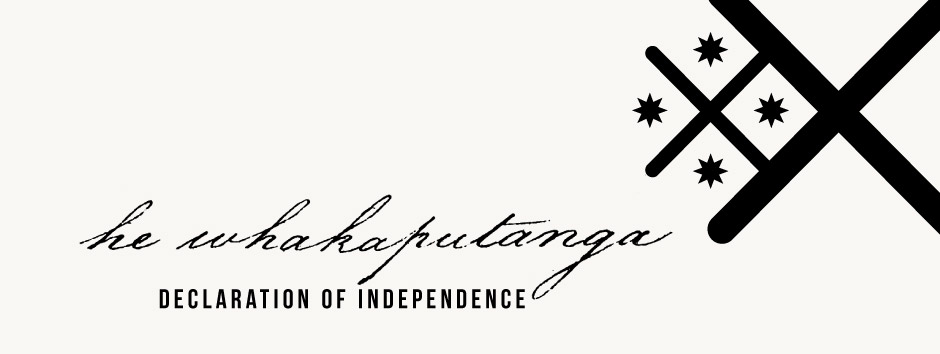Signing details
Moka was the younger brother of Rewa and Te Wharerahi, both signatories to He Whakaputanga. His mother was Te Auparo and his father was Hongi Hika’s second cousin, Te Maai (or Te Maoi). Moka was associated with Ōkuratope pā at Te Waimate. After his mother and his sister Te Kārehu were killed during a Ngare Raumati attack, Moka and his brothers took the hapū name Te Patukeha to remember their mother’s death in her garden.
During the 1820s and 1830s Moka distinguished himself in battle at Mātakitaki, Mokoia, Te Tōtara, Kaiwaka and Urewera, and was a trusted warrior of Hongi Hika. After the battle of Te Ika-a-Ranganui in 1825 (where he was shot, but was rescued by fellow Ngāpuhi chief Rāwiri Taiwhanga), Moka took the name Te Kaingamatā, meaning ‘struck by a bullet’.
Alongside his brothers and others of his hapū, Moka signed He Whakaputanga on 28 October 1835. Moka was also present at Christ Church, Kororāreka (Russell), on 30 January 1840. Here, Captain William Hobson read proclamations extending New South Wales’s jurisdiction to include New Zealand, confirmed his own appointment as Lieutenant Governor, and dealt with the issue of land transactions. Moka was the sole Māori signatory to a document that confirmed the nature of the meeting, which he signed with a mark.
At Waitangi on 5 February 1840, Moka and his brother Rewa both spoke against the proposed Treaty with the British Crown. Moka talked about illegal land transactions by Europeans and referred to the proclamations of 30 January: 'Let the Governor return to his own country… let us remain as we were. Let my lands be returned to me – all of them – those that are gone.' [1] Moka’s name appears on the Waitangi sheet (written as ‘te tohu o Moka’), but there is no signature or mark on the document itself; descendants believe he refused to sign.
Moka is thought to have died in the 1860s; he is buried at Mataraua.
[1] William Colenso, The Authentic and Genuine History of the Signing of the Treaty of Waitangi, New Zealand, February 5 and 6, 1840: Being a Faithful and Circumstantial, Though Brief, Narration of Events Which Happened on That Memorable Occasion: With Copies of the Treaty in English and Maori and of the Three Early Proclamations Respecting the Founding of the Colony, George Didsbury, Government Printer, Wellington, 1890, p.19.
